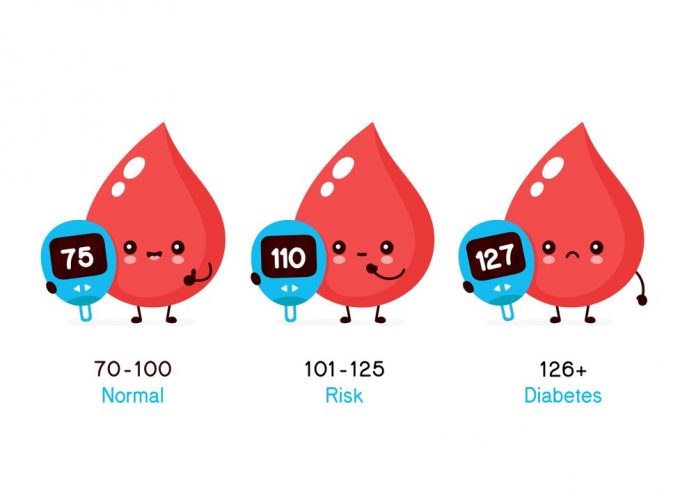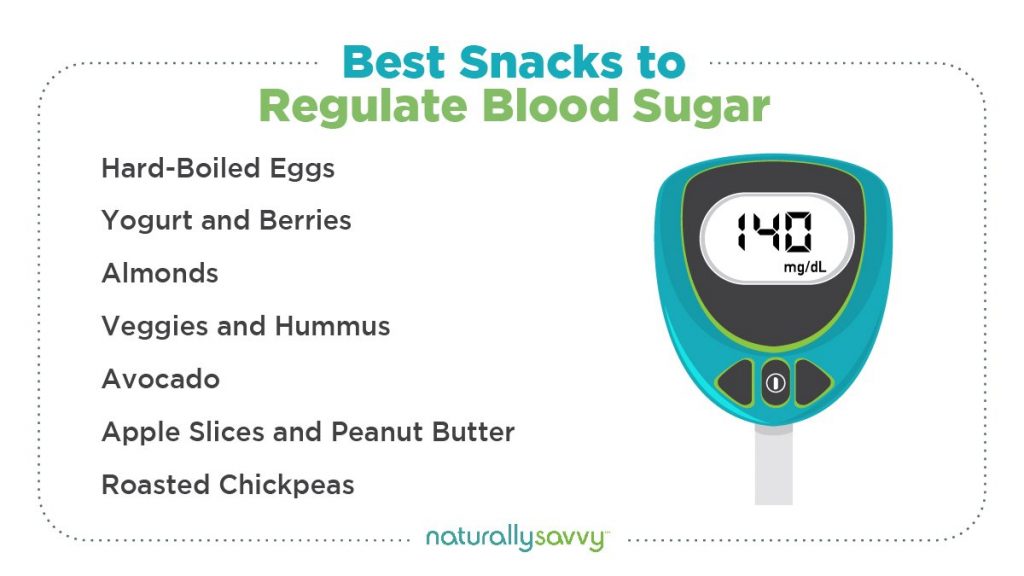
We often hear the term “blood sugar,” but what does it mean and what should we understand about it? Given that diabetes and prediabetes affect such significant numbers of the general population—34.2 million Americans and 88 million Americans, respectively, according to the American Diabetes Association—it’s important for everyone to have some basic knowledge of blood sugar and how it affects health and well-being. What are healthy blood sugar levels? What impact can high blood sugar levels have on your health? What can you do to help maintain healthy blood sugar? Let’s take a look at these and other questions.
What is blood sugar?
Blood sugar, also known as blood glucose, refers to the amount of glucose in your bloodstream. That amount is regulated by the hormone called insulin, which helps your body transform glucose into energy as well as store some in your fat cells, liver, and muscles to use when your body needs it. Therefore, insulin is essential for life.
After you eat, the level of sugar rises in your blood. This is a signal for your pancreas to release insulin into your bloodstream. The insulin meets up with your cells and prompts them to allow the sugar to enter. After the insulin is inside the cells, the glucose is converted into energy or stored.
What are healthy blood sugar readings?
Getting your blood sugar levels checked is as easy as testing a drop of blood taken from your finger. Many factors can affect your blood sugar level, including what you’ve eaten, how much, and when; use of medications, other medical conditions, age, stress, dehydration, physical activity, alcohol use, menstrual periods, and illness.
Read about how to stabilize blood sugar with herbs and spices
You can get your normal blood glucose levels after fasting or after you’ve eaten. Here are some general guidelines for the United States and Canada:
- Less than 100 mg/dL is normal for adults without diabetes who have fasted for 8 hours (US)
- Prediabetes blood sugar levels are 100 mg/dL to 125 mg/dL after an eight-hour fast (US)
- 6.1 mmol/L (110 mg/dL) or less is normal for adults without diabetes after fasting for 8 hours in Canada
- Prediabetic range is greater than 6.1 mmol/L to 6.9 mmol/L (>110 mg/dL to 125 mg/dL) in Canada
What are the signs of high and low blood sugar?
High blood sugar, also referred to as hyperglycemia, happens when your body can’t use insulin correctly or you don’t have enough. This causes the glucose to accumulate in your bloodstream. Symptoms of high blood sugar can include fatigue, headache, frequent need to urinate, blurry vision, weight loss, extreme thirst, and trouble concentrating.
If you don’t treat hyperglycemia, it can result in diabetic ketoacidosis. That’s when the body responds by creating ketones, which are waste products that can accumulate in the blood and become lethal. Symptoms of ketoacidosis include abdominal pain, vomiting, exhaustion, and vision loss.
Low blood sugar, aka hypoglycemia, is marked by lightheadedness, dizziness, irritability, shakiness, nervousness, anxiety, confusion, chills, hunger, pale skin, sleepiness, fainting, clamminess, sweating, rapid heart rate, and tingling lips.
How is blood sugar tested?
Doctors can test blood sugar levels using several approaches. One is the fasting plasma glucose test, in which your blood is tested after you have fasted for eight hours (except for water). This test is typically done in the early morning before breakfast. A result of higher than 126 mg/dL indicates a diagnosis of diabetes.
Another test is the oral glucose tolerance test. After you fast for eight hours, you drink a sugary solution and have your sugar levels checked after two hours. Levels greater than 200 mg/dL indicate diabetes.
Yet another approach is the hemoglobin A1C test. Your blood sugar levels are measured several times over two to three months. An A1C level of 6.5 percent or greater is an indication of diabetes. A normal result is less than 5.7 percent; 5.7 to 6.4 percent is considered prediabetes in the United States. In Canada, an A1C level of 6.5 percent or higher indicates diabetes; 6.0 to 6.4 percent indicates prediabetes.
How can you keep your blood sugar even?
The name of the blood sugar game is balance: you want to keep your glucose levels as even and balanced as possible. To help prevent blood sugar spikes, consider these tips:
- Reduce the amount of sugar you consume, especially refined sugars, as well as too many fruits.
- Consume fewer carbohydrates, and be sure those you do eat are complex and rich in fiber. Or take a fiber supplement to slow digestion and the release sugar into the blood.
- Stay well hydrated. Don’t wait until you’re thirsty to drink water.
- Include vinegar in your diet. One study found that individuals who consumed vinegar after eating a meal containing 50 grams of carbs had significantly lower blood sugar than those who didn’t take the vinegar. A tablespoon or two is all you need.
- Keep a healthy weight.
- Try a berberine supplement to balance blood sugar.
- Exercise daily, with a goal of at least 30 minutes. Include both aerobic and strength training during the week, alternating to keep it interesting!
- Choose healthy snacks, such as almonds, apple slices with peanut or other nut butter, avocado slices, berries and yogurt (dairy or nondairy), hard-boiled eggs, hummus and veggies, and roasted chickpeas.

- Get both magnesium and chromium in your diet or as a supplement. These minerals can help increase insulin sensitivity, and research indicates that the combination is more effective than either supplement alone. Magnesium-rich foods include nuts, seeds, avocados, whole grains, and legumes; chromium can be found in eggs, poultry, beans, peas, seeds, and lentils.
Read about blood sugar and mood: the fine art of balancing with food
How blood sugar affects your body and brain
Abnormal blood sugar levels aren’t just associated with prediabetes and diabetes. High sugar levels can eventually damage your pancreas and lead to hardening of the arteries (atherosclerosis) and other damage to your blood vessels. In fact, damaged blood vessels are also associated with heart attacks, kidney disease, erectile dysfunction, nerve damage (neuropathy), poor circulation to the feet and hands, vision problems, stroke, a weakened immune system, and slow wound healing.
Did you know high or low blood sugar levels can impact your sleep? When your levels are too high you can feel irritable and restless. Blood sugar that is too low can cause sweating, clamminess, and nightmares. There’s also growing evidence that unstable blood glucose levels are associated with depression, anxiety, nervousness, irritability, anger, and sadness.
Bottom line
It’s important to know your blood sugar level and how to keep it at a healthy level. It’s recommended that all adults beginning at age 45 be screened for diabetes at three-year intervals. Those with multiple risk factors (e.g., obesity, smoking, family history of diabetes, high blood pressure, high HDL cholesterol) should be screened at an earlier age and more often.










